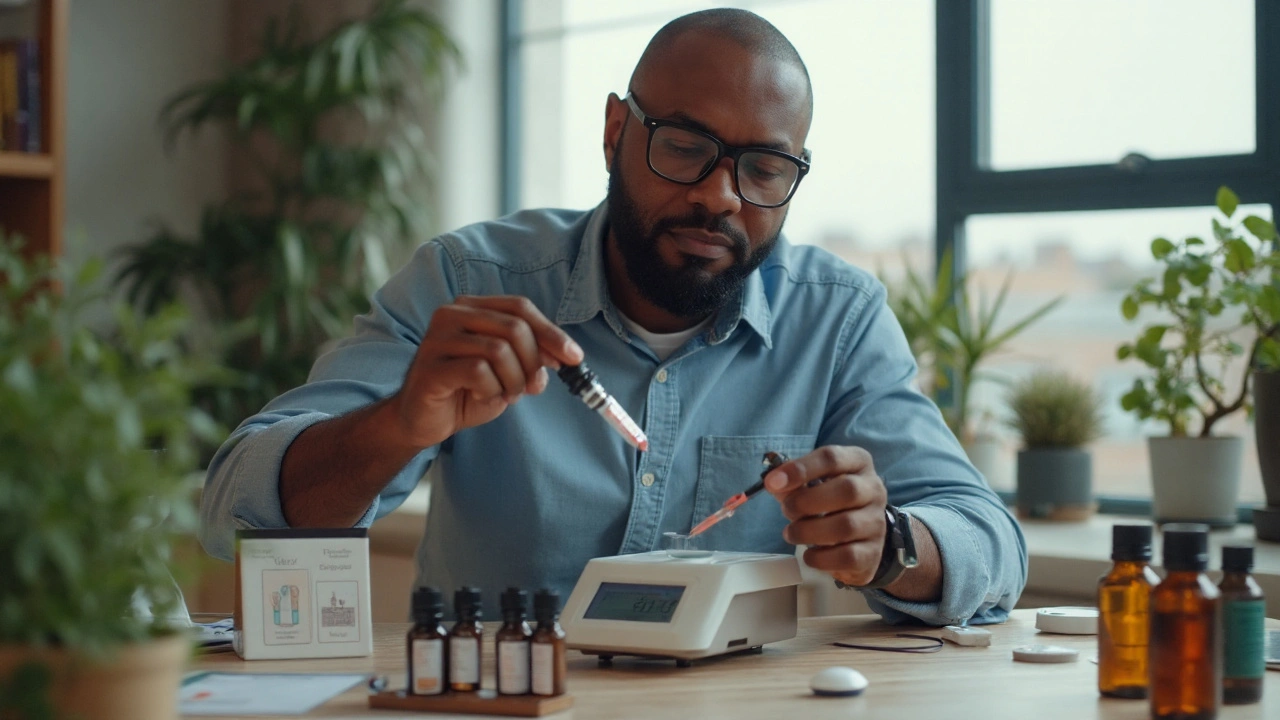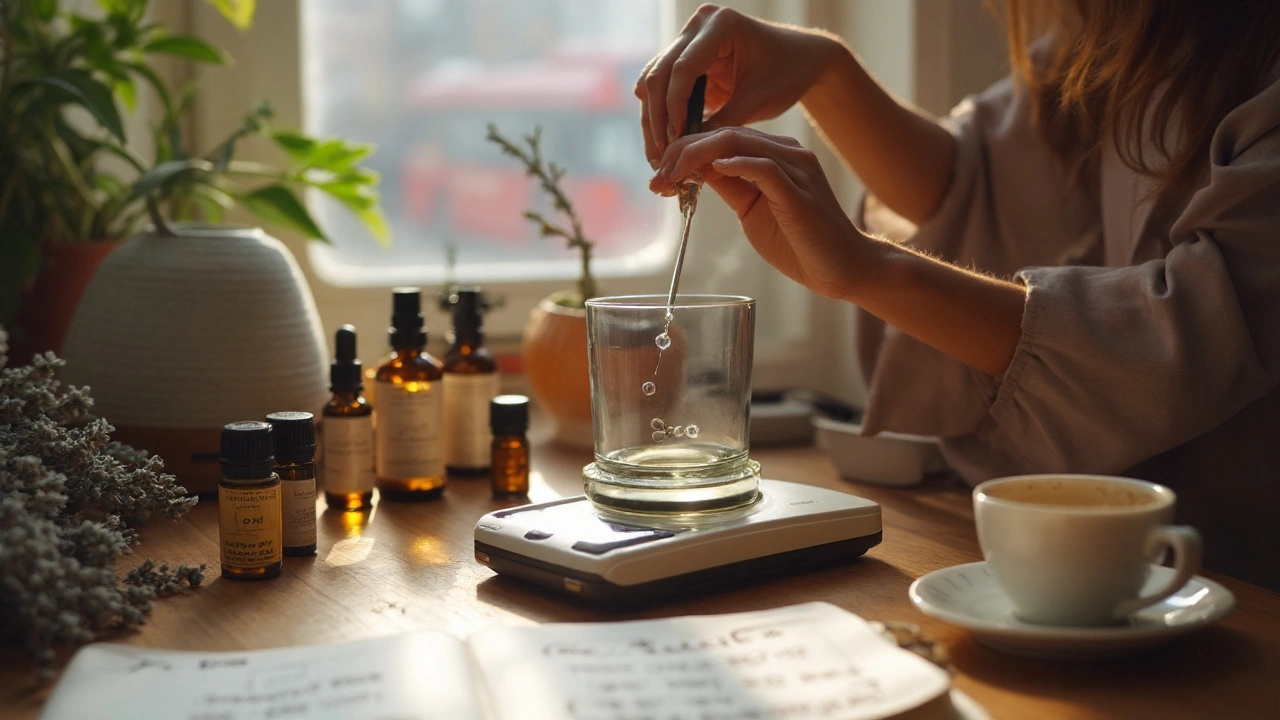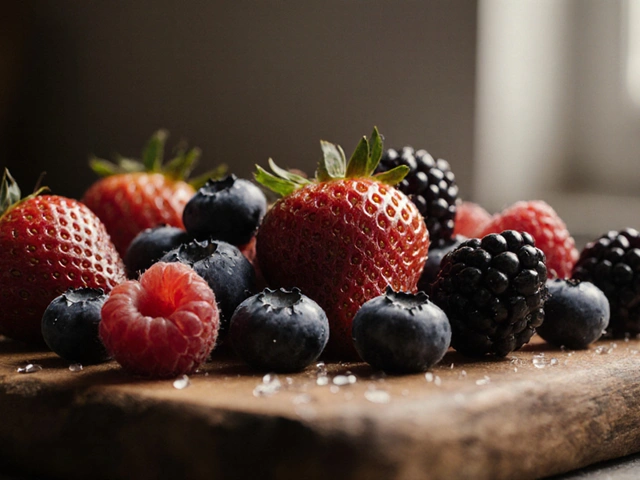If you’re wondering whether a tiny bottle of plant scent can actually help you sleep better, breathe easier, or feel less tense-the short answer is: sometimes, and it depends on how you use it. When used right, essential oils can support mood, comfort, and routine self-care. Used wrong, they can irritate skin, trigger headaches, or waste money. I’ll keep it real, simple, and practical. This is the beginner’s playbook I wish I had years ago in my flat in Johannesburg, where winter colds and summer mosquitoes take turns trying their luck.
- Key takeaways: start low (1-2% dilution), short sessions (20-30 minutes), and match oils to a clear goal (sleep, stress, focus, breath, skin).
- Evidence exists but varies: lavender for anxiety and sleep (modest), peppermint for tension-type headaches (topical), eucalyptus for stuffy noses.
- Never ingest; avoid undiluted skin use; beware phototoxic citrus (like bergamot) and kid/pet risks.
- Quality cues: Latin names, batch GC/MS report, country of origin, and honest pricing (rare oils cost more).
- Quick wins: a 2% roll-on for calm, a small-batch diffuser blend for focus, and a steam inhalation when you’re congested.
What Aromatherapy Is (and Isn’t)
Aromatherapy is the use of concentrated plant extracts-volatile compounds distilled or pressed from leaves, flowers, peels, woods, and resins-to support well-being. You experience them mainly in two ways: by inhaling the aroma (nose to brain), or by absorbing trace amounts through the skin when diluted in a carrier oil. The nose-brain link is quick: scent signals travel to the limbic system, which shapes emotion and memory. That’s why a whiff of lavender can feel calming within minutes.
Expect steady, supportive effects-not miracles. You might fall asleep faster with lavender, feel less tense during a tough week, or ease a tension headache with a peppermint roll-on. You won’t cure chronic disease, replace prescribed meds, or “detox” anything. If a brand promises that, treat it as a red flag.
What the research says, in plain language:
- Lavender (Lavandula angustifolia): Multiple small randomized trials link inhaled or topical lavender to reduced anxiety and slightly better sleep onset. Sources: Cochrane reviews (sleep/anxiety), NCCIH summaries, and clinical trials in hospital settings.
- Peppermint (Mentha x piperita): Topical preparations with menthol have RCT support for tension-type headaches. German double-blind trials found 10% peppermint oil applied to the temples eased pain comparably to common analgesics for mild episodes.
- Eucalyptus (Eucalyptus radiata/globulus): 1,8-cineole helps the perception of easier breathing in colds; studies show reduced nasal resistance and improved breathing comfort.
- Tea tree (Melaleuca alternifolia): Well-known antimicrobial properties; useful for acne as part of a skincare routine. Patch test-some people react.
- Citrus like bergamot and sweet orange: Often show mood-lifting effects in small studies; good for “mental reset” breaks.
That said, many studies are small, often short, and results vary. Think “adjunct support,” not a stand-alone cure. If you’re pregnant, nursing, have asthma, epilepsy, major skin conditions, or you’re applying oils on kids or around pets, you need extra caution and proper dilutions (details below).
Local note from here in South Africa: you’ll see Cape chamomile (Eriocephalus species), rose geranium, and buchu on shelves. They’re lovely but potent; Cape chamomile is soothing for stress, rose geranium balances scent profiles and skin blends, and buchu is strong and best left to experienced users. When in doubt, keep to gentle, well-studied basics while you learn.
Safety First: Dilution, Doses, and When to Hold Back
Most issues people have with aromatherapy come down to dose. A simple rule: use the lowest amount that gets the job done.
Topical dilution cheat sheet (Tisserand & Young, Essential Oil Safety, 2nd ed.):
- Face, long-term, kids, elderly, sensitive skin: 0.5-1% (that’s 1-2 drops per 10 mL carrier oil)
- Daily adult body care: 2% (about 6 drops per 10 mL)
- Short-term spot use (e.g., muscle): 3-5% (9-15 drops per 10 mL)
- Very strong oils (cinnamon bark, oregano, clove): avoid or keep under 0.5-1% and only short term, if at all
Diffusion guidelines:
- Start with 2-4 drops in 100-200 mL water (check your diffuser size). Run 20-30 minutes, then pause for 30-60 minutes. Total 1-3 hours per day is plenty for most people.
- Ventilate. If anyone gets a headache, nausea, or feels “jittery,” stop and air out the room.
Hard no’s and red flags:
- No ingestion. Unless you’re working with a clinician trained in clinical aromatherapy, keep oils out of your mouth. They’re highly concentrated and can harm the gut, liver, or lungs if aspirated.
- No undiluted skin use. Yes, you’ll see videos. Yes, people get sensitized-that’s a permanent allergy that ruins future use.
- No photosensitive oils on sun-exposed skin. Cold-pressed bergamot, lime, lemon, grapefruit can cause burns and dark spots with UV. Use steam-distilled versions or keep treated skin covered for 12-24 hours (varies by oil). Bergamot is the most notorious.
Kids, pregnancy, medical conditions:
- Kids: Avoid peppermint on or near faces of children under 6, and eucalyptus on or near faces under 10 (risk of breathing reflex issues). Stick to gentle options at 0.25-0.5%: lavender, Roman chamomile. Diffuse briefly, not in a closed room while they sleep.
- Pregnancy: Many adults tolerate lavender and citrus at low dilutions, but avoid high-ketone oils (like sage officinalis) and “hot” oils (oregano, cinnamon bark). When unsure, skip it or consult a qualified professional.
- Epilepsy/asthma: Strong, camphor-rich oils and 1,8-cineole heavy oils can be triggers for some. Test very low, or avoid if you’ve reacted before.
- Blood thinners: Avoid wintergreen and high-salicylate blends. Peppermint can interact with some meds-confirm with your pharmacist.
- Pets: Cats are especially sensitive. Don’t apply oils to pets, don’t trap them in a room with a diffuser, and keep bottles sealed. If your pet leaves the room when you diffuse, that’s their answer.
Patch test for skin:
- Mix 1 drop of oil into 10 mL carrier (that’s 0.5%).
- Apply to the inner forearm. Wait 24 hours. If there’s redness, itching, or burning, don’t use it.
Storage and shelf life:
- Keep oils in dark glass, tightly closed, away from heat and sunlight.
- Citrus oils oxidize fast-aim to use within 12-18 months. Woods and resins (like cedarwood, patchouli) last longer, often years. Freshness reduces skin reactions and keeps the scent true.
Who says? Safety guidance above follows Tisserand & Young (Essential Oil Safety), IFRA allergen considerations, and public guidance from NCCIH. When in doubt, go gentler than you think.
Pick Your Goal: Best-Fit Oils, Evidence Notes, and Quick Blends
Start with a clear job-to-be-done. Want better sleep onset? A calmer commute? A screen-time focus reset? Here’s a compact map with practical picks, what the science says, and how to use them without overthinking it.
| Oil (Latin name) | Primary component(s) | Evidence snapshot | Best for | Typical topical dilution | Key risks |
|---|---|---|---|---|---|
| Lavender (Lavandula angustifolia) | Linalool, linalyl acetate | Modest RCT support for anxiety/sleep | Sleep, stress, skin soothers | 1-2% body; 0.5-1% face | Rare skin sensitivity; patch test |
| Peppermint (Mentha x piperita) | Menthol, menthone | RCTs for tension-type headache relief (topical) | Headache roll-ons, alertness | 1-3% temples/neck | Avoid near faces of young kids; can be stimulating |
| Sweet Orange (Citrus sinensis) | Limonene | Mood-lifting in small trials | Daytime calm, freshening | 1-2% body | Less phototoxic than bergamot; still sun caution |
| Bergamot (Citrus bergamia) | Linalyl acetate, limonene, bergapten | Stress and mood support; anecdotal clinic use | Work stress, tension | 1-2% | Phototoxic unless bergapten-free (FCF) |
| Eucalyptus (E. radiata or globulus) | 1,8-Cineole | Improves perceived nasal airflow | Colds, stuffy nose | Diffusion or chest at 1-2% | Avoid near faces of kids under 10 |
| Tea Tree (Melaleuca alternifolia) | Terpinen-4-ol | Antimicrobial; acne support | Blemishes, scalp care | 0.5-1% face; 1-2% scalp | Skin reactions in some; patch test |
| Roman Chamomile (Chamaemelum nobile) | Isobutyl angelate, esters | Traditionally calming; gentle | Kids’ blends, sensitive skin | 0.5-1% | Asteraceae allergy risk |
| Rosemary ct. cineole (Rosmarinus officinalis) | 1,8-Cineole | Attention/alertness in small studies | Study/focus sessions | Diffusion; 1-2% topical | Asthma caution; avoid in epilepsy |
| Geranium (Pelargonium graveolens) | Citronellol, geraniol | Balancing scent; skin-friendly | Skin blends, mood | 1-2% | Possible skin sensitization |
| Cedarwood Atlas (Cedrus atlantica) | Sesquiterpenes | Grounding; sleep support (anecdotal + small trials) | Bedtime blends | 1-2% | Not for pregnancy in high doses |
Quick blends (measured for 10 mL carrier; 1 teaspoon ≈ 5 mL):
- Sleep roll-on (2%): 4 drops lavender, 2 drops cedarwood atlas, 2 drops sweet orange in 10 mL jojoba. Roll on wrists and collarbone 20 minutes before bed.
- Focus diffuser (small room): 2 drops rosemary ct. cineole, 1 drop peppermint, 1 drop lemon in 150-200 mL water. Run 20 minutes, break, repeat once.
- Headache temple blend (2%): 3 drops peppermint, 1 drop lavender in 10 mL sweet almond. Apply lightly to temples/neck; keep away from eyes.
- Congestion steam: 1 drop eucalyptus in a bowl of hot water. Towel over head, eyes closed, inhale gently for 3-5 minutes. Stop if it stings.
- Calm pocket inhaler: 8-12 drops total on a blank wick: 6 lavender, 4 bergamot FCF, 2 Roman chamomile. Sniff for 3-5 breaths when you feel keyed up.
Local picks I keep around in Joburg: lemon eucalyptus (for mosquitoes in summer evenings), rose geranium (for skin and balancing floral blends), and Cape chamomile (for a soothing bedtime profile). On load-shedding nights, a single drop of lemon eucalyptus on the door mat helps outdoors without fogging the room.

How to Use: Methods, Ratios, and Real-World Steps
Here’s the part most people get wrong. The method and dose matter more than the brand name. Use these steps as your default.
Diffuser steps:
- Fill to the line (typically 100-200 mL water).
- Add 2-4 drops total of oil. More scent ≠ more benefit; it just overwhelms your nose.
- Run 20-30 minutes, then pause 30-60 minutes. Keep doors cracked for airflow.
- Clean weekly-residue dulls scent and can harbor gunk.
Personal inhaler (great at the office or commute):
- Load 8-12 drops total on the wick.
- Cap it. To use, 3-5 calm breaths, then put it away.
- Swap wicks every 2-4 weeks to keep it fresh.
Topical roll-on (10 mL glass with steel roller):
- Daily adult use: 2% (6 drops total of oil per 10 mL carrier).
- Kids/face/sensitive: 0.5-1% (1-3 drops per 10 mL).
- Label the bottle with date and oils used. Use within 3-6 months for freshness.
Bath (safe and lush):
- Never drop oils straight into water-they float and can sting skin.
- Mix 3-6 drops into 1 tablespoon of unscented liquid soap or a dispersing base first.
- Add to a warm (not hot) bath, swish, soak 10-15 minutes.
Warm compress (stiff neck, period cramps):
- In a bowl, add 2-3 drops oil to 1 teaspoon carrier and mix.
- Soak a cloth in warm water, wring out, and lay it over the area.
- Refresh once it cools.
Safety checklist before you start:
- Goal clear? (sleep, stress, focus, breath, skin). No goal, no blend.
- Dilution correct? 0.5-1% face/kids; 2% daily adult; 3-5% short term.
- Any risks? (sun with bergamot/lime/lemon; kids with peppermint/eucalyptus; pets in room?).
- Patch test done for new oils or leave-on products.
- Label your bottle with date and dilution.
Why this works: you’re engaging smell (fast signaling), skin (slow, tiny absorption), and ritual (consistency). The blend is only half the magic; the timing is the other half. For sleep, start your routine 20-30 minutes before bed. For focus, diffuse at the start of a work block, not two hours in when you’re already fried.
Smart Buying, Quality Clues, and a Simple Decision Tree
Good oils are about transparency, not fancy words. Look for:
- Latin name (e.g., Lavandula angustifolia), plant part, country of origin, extraction method (steam-distilled vs cold-pressed).
- Batch GC/MS report (a lab breakdown of compounds). Many solid suppliers provide it on request. No need to decode every peak-just proof of testing.
- Price that makes sense. True rose, sandalwood, and neroli are pricey. If it’s too cheap to be real, it probably isn’t real.
- Freshness and bottling date. Especially for citrus oils.
- Glass bottles with orifice reducer, child-safe caps if you have kids.
Avoid:
- “Fragrance oils” for therapeutic use-they’re synthetic blends, fine for candles but not for skin aromatherapy.
- Wild claims: “cures,” “detox,” “burns fat,” “safe to ingest anytime.”
- Opaque marketing without Latin names or country of origin.
Decision tree (pick your path):
- If you want sleep support → start with lavender. If that’s too floral, swap cedarwood atlas or try Roman chamomile. Keep dilution 1-2%.
- If you want daytime calm → try bergamot FCF or sweet orange in a brief diffusion session (20 minutes). If citrus feels flat, add a drop of lavender.
- If you want focus → peppermint with rosemary ct. cineole. Diffuse short intervals. If you’re sensitive, try lemon alone.
- If you want help with a stuffy nose → eucalyptus radiata in a steam or diffuser, or ravintsara if eucalyptus feels too sharp.
- If you want skin support → tea tree + lavender at 0.5-1%. Add geranium for balance if your skin tolerates it.
Local context (South Africa): essential oils are sold as cosmetics or wellness products, not medicines. Look for suppliers who share batch test data and Latin names. You’ll find good options online and in health shops; just compare labels and ask for GC/MS when you can. If a shop assistant can’t tell you the Latin name, that’s your cue to keep walking.
FAQ, Troubleshooting, and Next Steps
Mini-FAQ
- Can I put oils in a humidifier? Use a diffuser made for oils. Oils can damage humidifiers and spread unevenly.
- Are oils safe for my dog or cat? Don’t apply to pets, and don’t trap them in a scented room. Ventilate and let them leave. Cats are especially sensitive.
- Is lavender safe in pregnancy? Many adults tolerate low dilutions, but if you’re unsure, skip it or consult a clinician trained in perinatal care.
- Why do I get a headache when diffusing? You’re likely overdoing it or using stimulating oils. Reduce drops, shorten run time, switch to citrus or lavender, or stop entirely.
- Carrier oil vs. lotion-does it matter? Both work. Jojoba is stable and light; sweet almond is common. Unscented lotion is fine for quick blends.
- What about ingesting one drop in water? Oil and water don’t mix. Drops can irritate mucosa and lungs if aspirated. Stick to inhalation or diluted skin use.
- Can oils “balance hormones”? Firm claims go beyond evidence. Some scents may influence mood, stress, and sleep, which indirectly affect hormone rhythms. That’s not the same as medical endocrine therapy.
Troubleshooting guide
- Skin redness or itch after a blend: Stop, wash with mild soap and carrier oil. Next time, halve the dilution and patch test. Replace old citrus oils.
- No effect from a sleep blend: Start earlier (20-30 min pre-bed), reduce screen time, and try cedarwood or Roman chamomile instead of lavender.
- Too stimulating during focus sessions: Remove peppermint, use lemon + rosemary or just lemon. Shorten diffusion to 10-15 minutes.
- Household pushback on scent: Diffuse smaller amounts, keep windows cracked, or switch to a personal inhaler.
- Breakouts with tea tree: Drop to 0.25-0.5%, use as a spot treatment, and don’t layer with harsh actives like strong acids the same night.
Next steps for beginners
- Pick one goal for the next two weeks (sleep, stress, or focus).
- Choose one oil from the table that matches your goal and is low-risk for you.
- Make one product: a 2% roll-on or a simple 2-4 drop diffuser routine.
- Use at the same time each day for 7-14 days. Track sleep onset, mood, or focus in 1-2 lines in your notes app.
- Adjust: if it’s too strong, cut the drops by half. If the scent annoys you, swap within the same family (lavender → cedarwood; peppermint → lemon).
Pro tips from daily life here in Johannesburg: heat intensifies scent, so summer calls for fewer drops. For winter coughs, I reach for eucalyptus radiata in a short steam, not a heavy overnight diffusion. And yes, I label everything-because at 6 a.m., the peppermint and rosemary bottles look exactly the same. My partner Amara once grabbed the wrong one for a run and came back smelling like a lemon grove. Not the worst mistake, but labeling saves the day.
Credible references worth knowing (no links here-just names to look up): Cochrane reviews on aromatherapy and sleep/anxiety, NCCIH pages on aromatherapy, Tisserand & Young’s Essential Oil Safety (2nd ed.), and IFRA guidelines for allergens and phototoxicity. If you stick to the safety ranges above, match oil to goal, and respect your own nose, you’ll get the best of aromatherapy without the drama.





